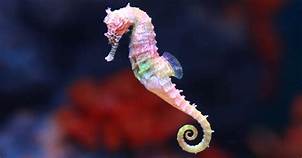Can You Get a Seahorse as a Pet?
Seahorses are fascinating creatures that have captured the attention of marine enthusiasts for decades. Their unique appearance and delicate nature have made them popular aquarium pets. However, before you decide to bring a seahorse home, it is important to understand the complexities of caring for these creatures.

Can You Legally Keep a Seahorse as a Pet?
The legality of keeping a seahorse as a pet varies depending on your location. In some regions, such as the United States, it is illegal to capture or possess wild seahorses. However, in some countries, it is legal to keep seahorses in captivity, provided that the animals have been bred in captivity and not taken from the wild.
What Species of Seahorses Can You Keep as Pets?
There are over 40 different species of seahorses, but only a few are suitable for life in captivity. The most commonly kept species include:
• Yellow seahorse (Hippocampus kuda)
• Tigertail seahorse (Hippocampus comes)
• Dwarf seahorse (Hippocampus zosterae)
• Weedy seahorse (Hippocampus erectus)
Each species has its own unique requirements, so it is important to research the specific needs of the species you are interested in before purchasing an animal.
What Do Seahorses Eat?
Seahorses are carnivores and their diet consists primarily of live food. They use their specialized mouth to suck up small crustaceans, such as brine shrimp, mysis shrimp, and amphipods. Seahorses are ambush predators, meaning that they lie in wait for their prey to come close before striking quickly.
Fresh or frozen food is not suitable for seahorses, as they require the movement of live prey to trigger their feeding response. It is important to provide a variety of live foods to ensure that your seahorse is getting a balanced diet.
What Kind of Aquarium Do Seahorses Need?
Seahorses require a specialized aquarium setup to thrive in captivity. Here are some key considerations:
• Tank Size: Seahorses need a tall, narrow tank with a capacity of at least 10 gallons per adult seahorse. The tank should have a secure lid to prevent the seahorses from jumping out.
• Water Quality: Seahorses are sensitive to water quality and require pristine conditions. The water should be kept at a temperature of 72-78°F and a pH of 8.0-8.4. Regular water changes are essential to maintain good water quality.
• Filtration: A powerful filtration system is necessary to keep the water clean and clear. A hang-on-back filter or canister filter is suitable for a seahorse aquarium.
• Lighting: Seahorses prefer dim lighting. Use low-wattage LED lights and avoid bright overhead lights.
• Substrate: Seahorses need a substrate that they can anchor their tails to. Live sand or crushed coral is a good option.
Are Seahorses Social Animals?
Seahorses are generally solitary creatures, but some species can live in pairs or small groups. If you are planning to keep multiple seahorses in the same aquarium, it is important to choose compatible species and to provide plenty of hiding places to reduce aggression.
It is also important to note that seahorses are delicate creatures and are easily stressed. Sudden changes in water quality or tank conditions can cause them to become sick or die.
Conclusion
Keeping seahorses as pets is a challenging endeavor and should not be taken lightly. These animals require specialized care and attention to thrive in captivity. If you are considering getting a seahorse as a pet, be prepared to invest the time and resources necessary to provide them with the best possible care.
Declaration: All article resources on this website, unless otherwise specified or labeled, are collected from online resources. If the content on this website infringes on the legitimate rights and interests of the original author, you can contact this website to delete it.



